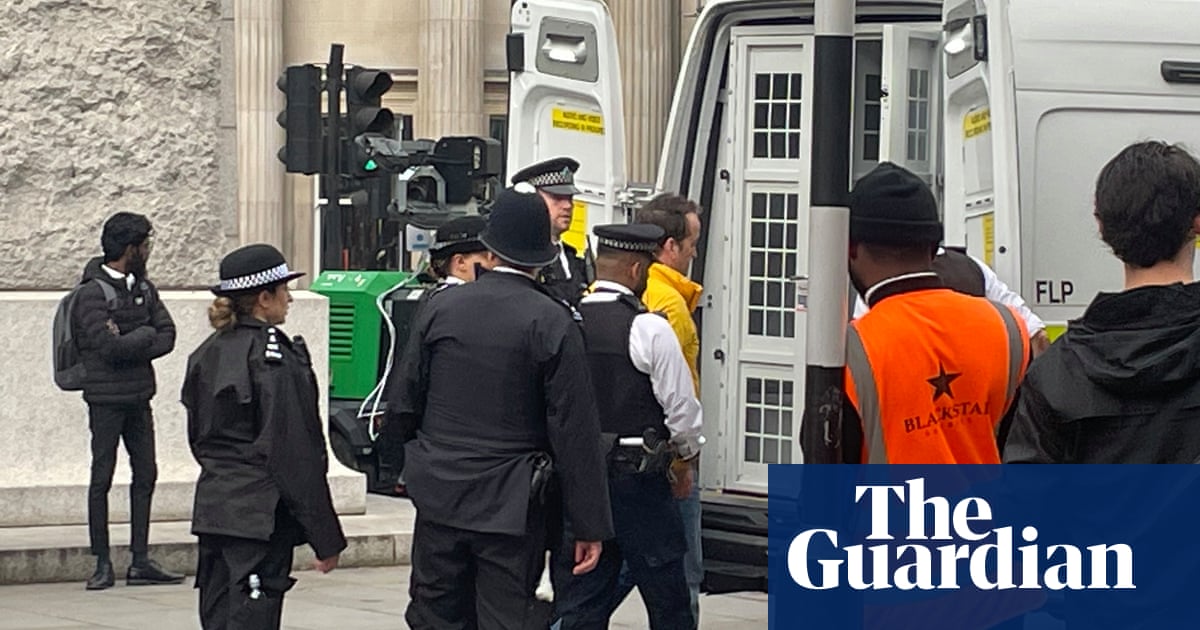I was utterly transfixed last week by a moment captured on CCTV in a Florida gym. A woman – an Instagram fitness model called Nashali Alma – sees a man waiting outside the door and interrupts her workout to buzz him in. It is evening. The two are now alone, sealed inside the empty room.
After a few minutes the man approaches her and then, shockingly, starts to chase her around the machines. Then he catches her. You think: that’s it, she’s done for. But like one of those dramatic sequences in the very best David Attenborough films – a hatchling iguana evading a nest of snapping snakes, perhaps, or an impala struggling clear of a crocodile death-roll – it is not over. She fights and, eventually – unbelievably – she wins. The exhausted predator has been outdone by his wily prey.
“I was confident I had the strength and mentality to fight back,” Alma later said, for all the world like a victorious footballer at a press conference. “I would tell every woman always to keep fighting, never give up.”
Inspiring stuff, I thought, but many would disagree. In fact the video has sparked something of a row online.
After a Florida sheriff told reporters the story would be “an inspiration to other women”, many reacted in fury. There was nothing inspiring about a woman being attacked, they felt – in fact that message was deeply irresponsible. The real and only message was that women are not safe in gyms – not safe anywhere at all.
How should we talk about this video? Which message is the right one? The question captures an unease I have long felt in the way we talk about female safety.
We hear a great deal of the second message: that women are not safe walking home at night, not safe on public transport, not safe in gyms. It is drummed home at every opportunity (even a video of a woman successfully fending off an attack, it seems, is a chance to tell us just how unsafe we are). Yes, it is important to push for greater protections against violence. But is it possible that this narrative – that women are perpetually at great risk in public spaces – does harm as well as good?
I should say that there is of course some truth to the message. Horrific things do happen to women in public places. But perhaps not as often as we might think.
In England and Wales, women are far less likely to be killed than men: in the year ending March 2022, 72% of homicide victims were male. And as for safety on the streets, the stats suggest the greater danger for women lurks in the home, at the hands of a current or former partner. In that same year, stranger attacks accounted for just 7% of female victims and 15% of male ones. Just 15% of rapes are committed by strangers.
These are the facts. Yet they remain at odds with public perception, perhaps because of an outsize cultural reaction when that rare terrible thing does happen to a woman walking home alone at night.
A year after the murder of Sarah Everard, a YouGov poll of British women found 66% of women either “always”, “often” or “sometimes” felt unsafe walking alone at night. Some 25% felt similarly afraid walking alone in the daytime. Anecdotal evidence suggests much the same effect has been produced by the coverage of Nicola Bulley’s death. Women are scared to go out alone.
Isn’t it better to be safe than sorry? Does it matter if daily risks to women are exaggerated, if it helps keep them safe? Well, here’s an argument that it does matter. In patriarchies, theorists might say, violence against women in public places is not only a social evil – it serves a political purpose. It is used to police. It tells women where they are supposed to go and where they are not. When women are attacked on the streets, or at universities, or in the workplace, they understand these places are not for them.
Informing women of real risks is one thing, but exaggerating the danger only helps deliver that original message: keep off the streets, leave the city to the men, this space is not for you. In fact, if the message is frightening enough, and spread widely enough, actual risk no longer matters. The work of the patriarchy is done. Women police themselves.
In the world’s strongest patriarchies there is not only vicious violence against women, but also a tradition of drumming up the threat. Women are told they are weak creatures in need of male protection at all times.
That is why they must stay in their houses, cultivate good relations with the family patriarch, wear veils and even consent to mutilation practices. It is, after all, for their own safety. (Studies in India suggest it is cultural fear of crime, rather than the actual statistics, that are most strongly linked to women’s decisions not to take up offers at prestigious universities or join certain workplaces.)
Nation states have for time immemorial used fear – foreign invaders, terrorist threat, even pandemics – as a shortcut to curtailing the freedom of their citizens. It is perhaps unsurprising if the world’s oldest power system uses much the same methods. A minister in the Indian government recently proposed any woman leaving the house register herself at the local police station so she can be tracked. For her protection, of course.
Yes, Alma’s video is an inspiration – it counters a disempowering message that women are supremely vulnerable to men. It tells us it might just be worth investing in a few self-defence lessons. And it contains another message too, perhaps no less important. Attacking women is not always as easy as it looks. Try it and you might just tangle with the wrong person.

 1 year ago
67
1 year ago
67










 English (US)
English (US)